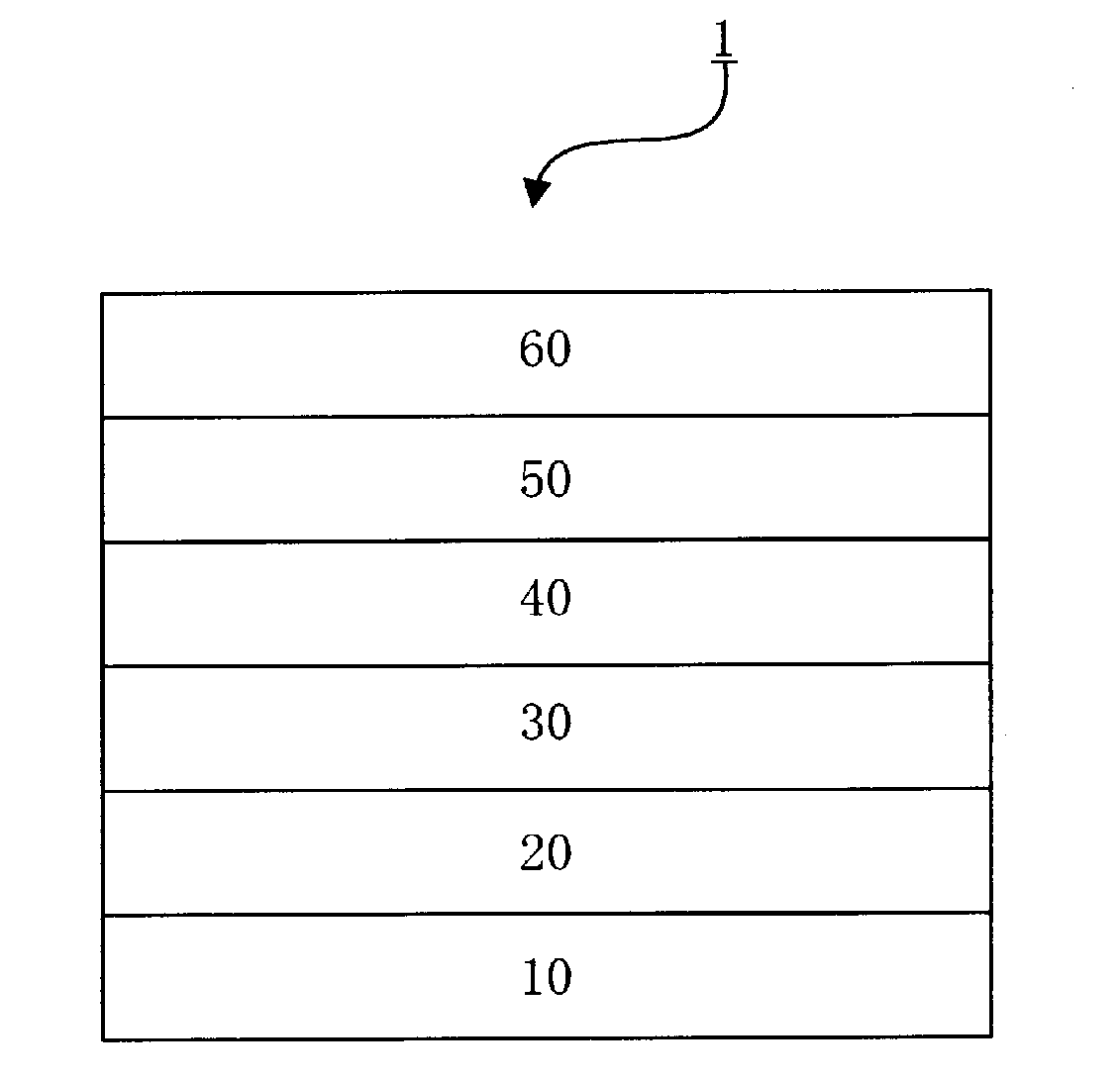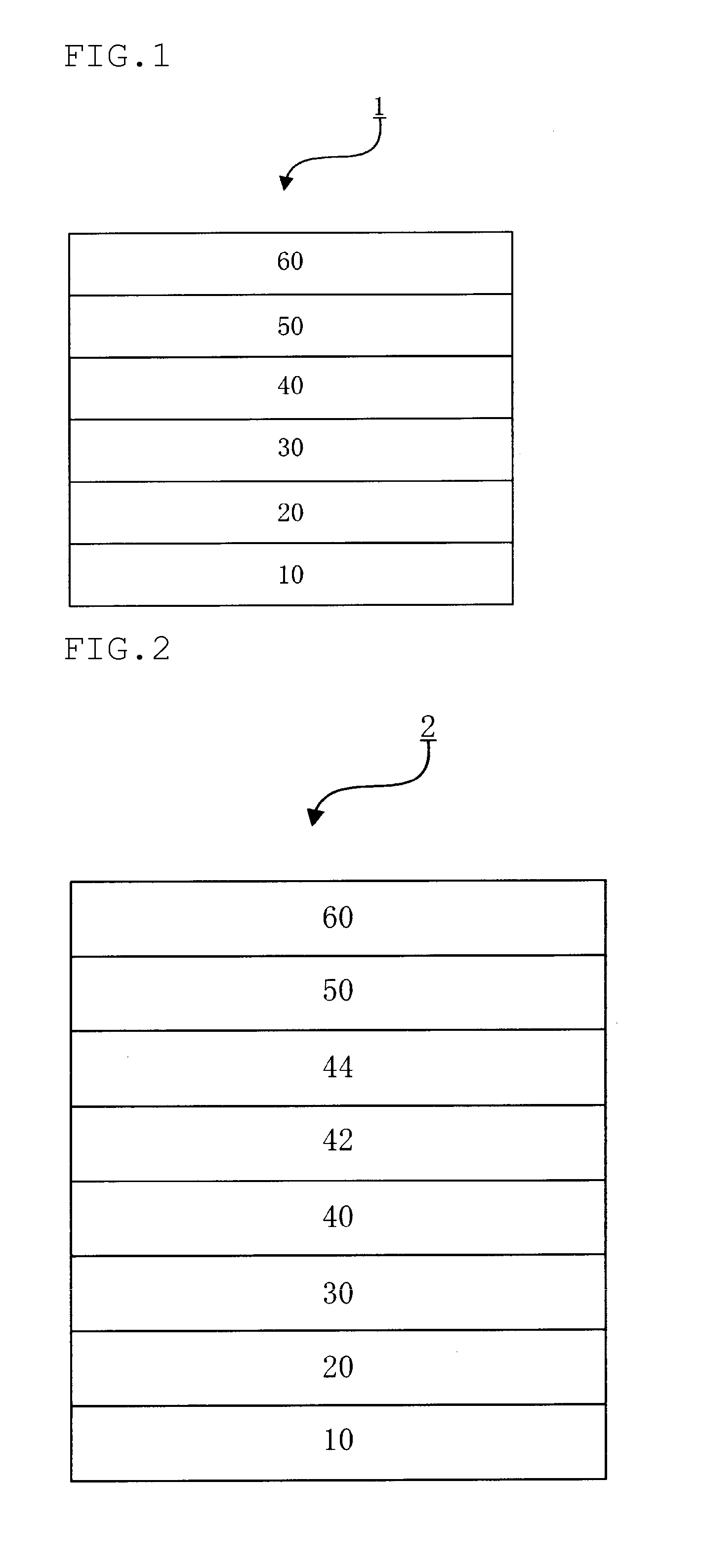Material for organic electroluminescent elements, and organic electroluminescent element using the same
- Summary
- Abstract
- Description
- Claims
- Application Information
AI Technical Summary
Benefits of technology
Problems solved by technology
Method used
Image
Examples
synthesis example 1
Synthesis of Compound (1)
Synthesis of Compound (1-a)
[0156]
[0157]84.10 g (500 mmol) of dibenzofuran and 500 ml of dichloromethane were placed in a three-neck flask to allow the dibenzofuran to be dissolved in the dichloromethane. The resulting solution was cooled to 0° C. in ice water. Then, a solution of bromine 52.5 ml (1025 mmol) / dichloromethane 200 ml was added dropwise over 30 minutes. Then, the resulting mixture was stirred at 0° C. for 2 hours, and subsequently, was allowed to stand at room temperature. The reaction was completed after stirring for 3 days. After completion of the reaction, an aqueous solution of sodium thiosulfate / sodium hydroxide was added to allow the remaining bromine to be deactivated. The resultant was transferred to a separating funnel, a dichloromethane phase was recovered, and extraction was conducted several times from an aqueous phase with dichloromethane. The solution was dried with anhydrous magnesium sulfate, filtered, and concentrated and evapora...
synthesis example 2
Synthesis of Compound (59)
[0167]
[0168]In a nitrogen atmosphere, 15.3 g (40.6 mmol) of compound (1-c), 4.00 ml (16.9 mmol) of 2,3-dibromopyridine, 60 ml of potassium carbonate 2M aqueous solution, 160 ml of toluene and 60 ml of ethanol were placed in a three-neck flask. To the mixed solution, 0.976 g (0.845 mmol) of tetrakis(triphenylphosphine)palladium was added, and refluxed for 16 hours.
[0169]After completion of the reaction, the resultant was cooled to room temperature, and extraction was conducted with dichloromethane by means of a separating funnel. The solution was dried with anhydrous magnesium sulfate, filtered, and concentrated. The filtrate was purified by passing through a short column of silica gel (eluent dichloromethane-dichloromethane:ethyl acetate=4:1) to obtain compound (59). The yield was 4.50 g (36%).
synthesis example 3
Synthesis of Compound (60)
[0170]
[0171]In a nitrogen atmosphere, 7.56 g (20.0 mmol) of compound (1-c), 2.00 g (8.35 mmol) of 4-chloro-3-iodopyridine, 30 ml of potassium carbonate 2M aqueous solution, 80 ml of toluene and 30 ml of ethanol were placed in a three-neck flask. To the mixed solution, 0.482 g (0.418 mmol) of tetrakis(triphenylphosphine)palladium was added, and refluxed for 16 hours.
[0172]After completion of the reaction, the resultant was cooled to room temperature, and extraction was conducted with dichloromethane by means of a separating funnel. The solution was dried with anhydrous magnesium sulfate, filtered, and concentrated. The filtrate was purified by passing through a short column of silica gel (eluent dichloromethane-dichloromethane:ethyl acetate=4:1) to obtain compound (60). The yield was 3.38 g (55%).
PUM
 Login to View More
Login to View More Abstract
Description
Claims
Application Information
 Login to View More
Login to View More - R&D
- Intellectual Property
- Life Sciences
- Materials
- Tech Scout
- Unparalleled Data Quality
- Higher Quality Content
- 60% Fewer Hallucinations
Browse by: Latest US Patents, China's latest patents, Technical Efficacy Thesaurus, Application Domain, Technology Topic, Popular Technical Reports.
© 2025 PatSnap. All rights reserved.Legal|Privacy policy|Modern Slavery Act Transparency Statement|Sitemap|About US| Contact US: help@patsnap.com



